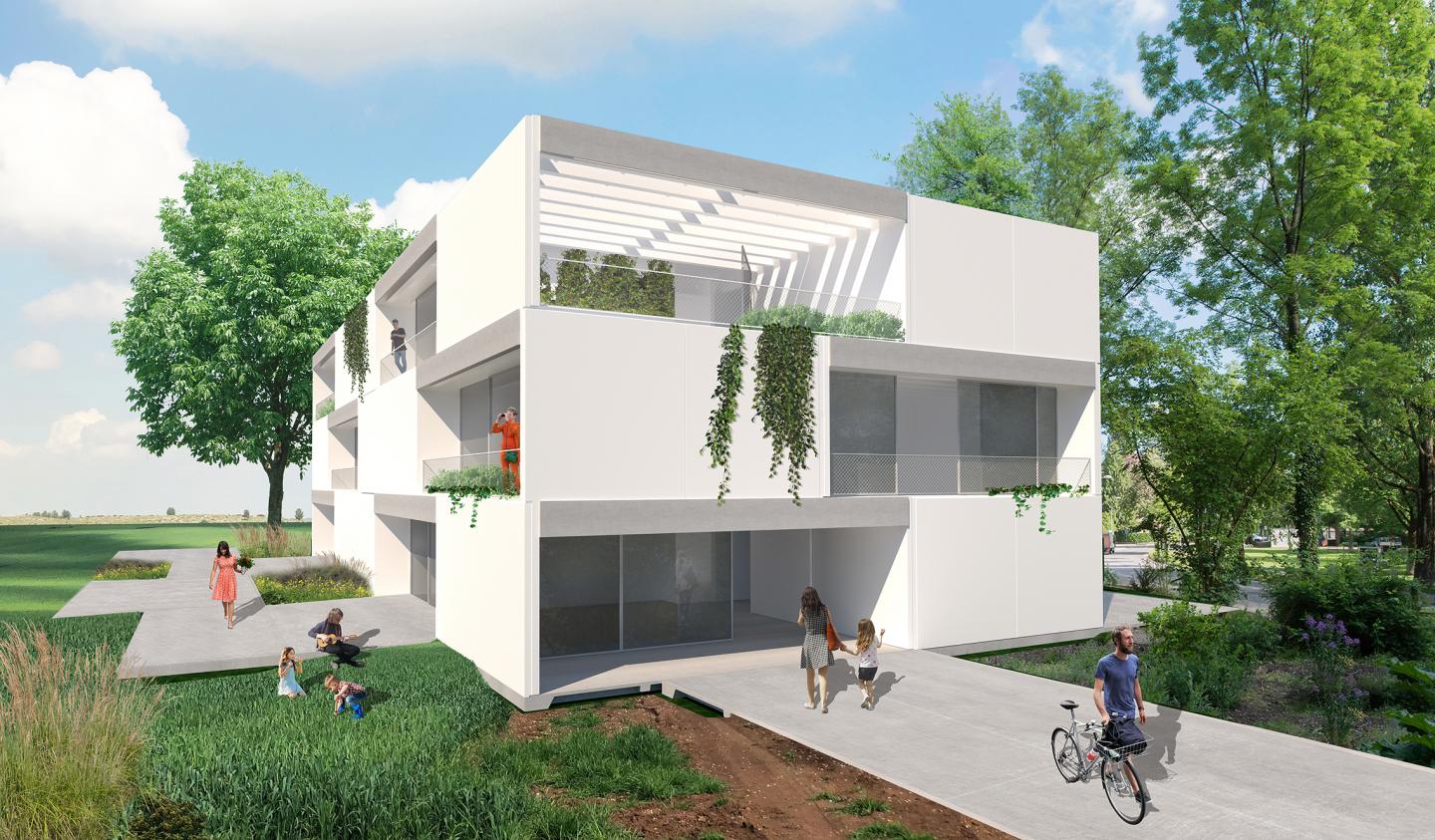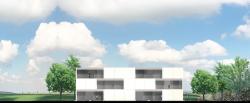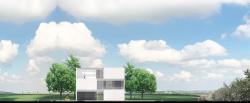The project is based entirely on the “Merhavit” prefabricated element. The Merhavit is the “building block” used to construct this community center or other public use space. The goal was to create a design that has an updated/modern look and a degree of flexibility and openness that is innovative using simple prefabricated elements and enable rapid construction without compromising on design.
By placing each of the two Merhavit elements perpendicular to one other - cubes are formed with interior and exterior spaces, with virtually no need for further division and walls. The opening to the outside in achieved without any holes in the frontal plane, and the internal passages without any holes in the interior walls - the openings are created by the shape of the elements themselves.
The facade provides a glimpse into the experience inside the building - interior spaces that open to the outside with balconies, so that the building opens with generous wide views to the landscape.
Assembling the prefabricated element using this method allows for future extension of the structure if needed - both sideways and upwards.
The interiors spaces, future classrooms, each have sizes that allow for flexibility and a wide variety of activities. The classroom spaces are arranged around a central axis corridor that creates a view to the outside through the classrooms on each side. In the center of the corridor - an elevator and stairs enable vertical flow of movement as well. This area also contains a protected interior space.
Expansive accessible roof areas create “outdoor classrooms" by lowering the roof surface of the Merhavit leaving the beams as a pergola that filters sunlight. The Merhavit floor surfaces are used to develop the area around the structure in a grid that simulates the new grid on which the structure is built.
Additional elements beyond the Merhavit-based units are just finishing touches - glass windows, mesh railings, industrial metal mesh floor surfaces in the "joints" between the Merhavit units, and the use of plywood surfaces for interior coverings and doors. All of the design materials and language in the structure come from the industrial world. The structure can be adapted to any plot size using this unique design technique.
This project won third-place in the architectural competition for innovative public building design using prefabricated elements sponsored by Ackerstein Industries.
2019
2019
Diagrams:
“Building Block” - the Merhavit prefabricated element.
Merhavit Cluster - perpendicular placement of two Merhavit elements with a central “joint”.
Merhavit Cube - Stacking of rotated Clusters to form the basic design element.
Extensions - Connecting Cubes to expand the structure - vertical movement enabled in between Cubes.
Flow - Horizontal axis of movement that enables landscape views at each end.
Flow - Vertical axis of movement (stairs/elevator) in the center that connected between Cubes.
Exterior spaces - balconies and rooftops used to mediate between interiors and exteriors.
Michael Peled Architecture Studio
https://www.michaelpeled.com/
[email protected]








